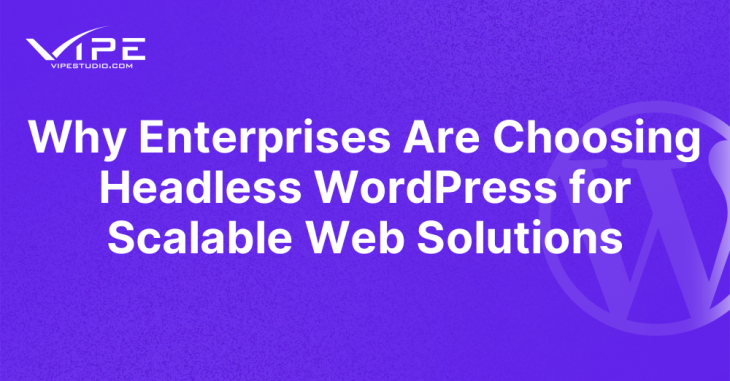Why Enterprises Are Choosing Headless WordPress for Scalable Web Solutions

READING TIME: MIN
As enterprise businesses grow, their websites must evolve to handle increasing content, traffic, and user expectations. Traditional WordPress setups often struggle with scalability and performance, leading many companies to adopt a headless WordPress approach. By decoupling the front end from the back end, enterprises can achieve faster, more flexible, and more scalable web solutions. In this article, we’ll explore why headless WordPress is gaining popularity among enterprises and how it helps businesses stay ahead in a digital-first world.
Understanding Headless WordPress and Its Benefits for Enterprises
Headless WordPress is a modern approach where WordPress is used purely as a content management system (CMS), while the front end is built using a separate technology, such as React, Next.js, or Vue.js. Instead of relying on WordPress’s built-in themes and templates, the website fetches content via APIs (such as REST API or GraphQL) and displays it on a custom-built front end.
Key benefits of headless WordPress for enterprises include:

- Improved Performance: By separating the front end from the back end, enterprises can leverage modern frameworks like Next.js to create lightning-fast websites that load instantly.
- Greater Scalability: Headless architecture allows businesses to distribute their website across different servers, improving performance and handling traffic spikes more efficiently.
- Enhanced Security: With the public-facing website separated from WordPress, there’s a reduced risk of security vulnerabilities and direct attacks on the CMS.
- Omnichannel Content Delivery: Content stored in WordPress can be distributed to multiple platforms—websites, mobile apps, IoT devices, and more—through APIs.
How Headless WordPress Supports Enterprise Growth and Expansion
One of the primary reasons enterprises choose headless WordPress is its ability to scale seamlessly as a business grows. Whether an enterprise operates across multiple markets, languages, or content-heavy platforms, a headless setup ensures flexibility and performance.
Here’s how headless WordPress supports enterprise growth:
- Multi-Platform Content Management: Enterprises can manage content in WordPress and publish it across websites, apps, and digital signage, all from a single source.
- Rapid Development and Deployment: Headless architecture allows front-end and back-end teams to work independently, speeding up development and feature releases.
- Better User Experience: Custom front-end frameworks enable enterprises to create visually engaging and interactive websites that cater to modern user expectations.
Key Technologies Used in Headless WordPress Implementations
While WordPress serves as the CMS, enterprises use various technologies to build the front end and handle content delivery. The most common technologies include:

- Next.js: A popular React framework that enables server-side rendering, static site generation, and fast-loading pages.
- GraphQL: An advanced API query language that optimizes how WordPress content is retrieved, reducing unnecessary data loads.
- Content Delivery Networks (CDNs): CDNs like Cloudflare and AWS CloudFront enhance performance by caching and delivering content closer to users.
Challenges of Headless WordPress and How to Overcome Them
Despite its advantages, transitioning to a headless WordPress setup comes with challenges. Here’s how enterprises can overcome common obstacles:
- Higher Development Complexity: Unlike traditional WordPress, headless setups require expertise in APIs, JavaScript frameworks, and front-end development. Partnering with an experienced development agency, such as Vipe Studio, can help enterprises navigate these complexities.
- Content Management Learning Curve: Editors accustomed to the traditional WordPress interface may need training on new content workflows when using headless CMS structures.
- SEO Considerations: Since headless WordPress relies on custom front-end frameworks, proper implementation of meta tags, structured data, and server-side rendering is necessary to maintain strong SEO performance.
Is Headless WordPress the Future for Enterprise Websites?
With the rapid digital transformation of businesses, the demand for scalable, fast, and multi-platform content delivery solutions is higher than ever. Headless WordPress is emerging as a preferred choice for enterprises looking to future-proof their web presence.
By adopting a headless approach, businesses gain greater flexibility, enhanced security, and improved performance—three critical factors for success in the modern digital landscape. If your enterprise is considering making the shift to headless WordPress, consulting with industry experts can ensure a smooth transition.

Looking to explore headless WordPress for your enterprise? Get in touch with Vipe Studio for expert guidance on implementation and development.

